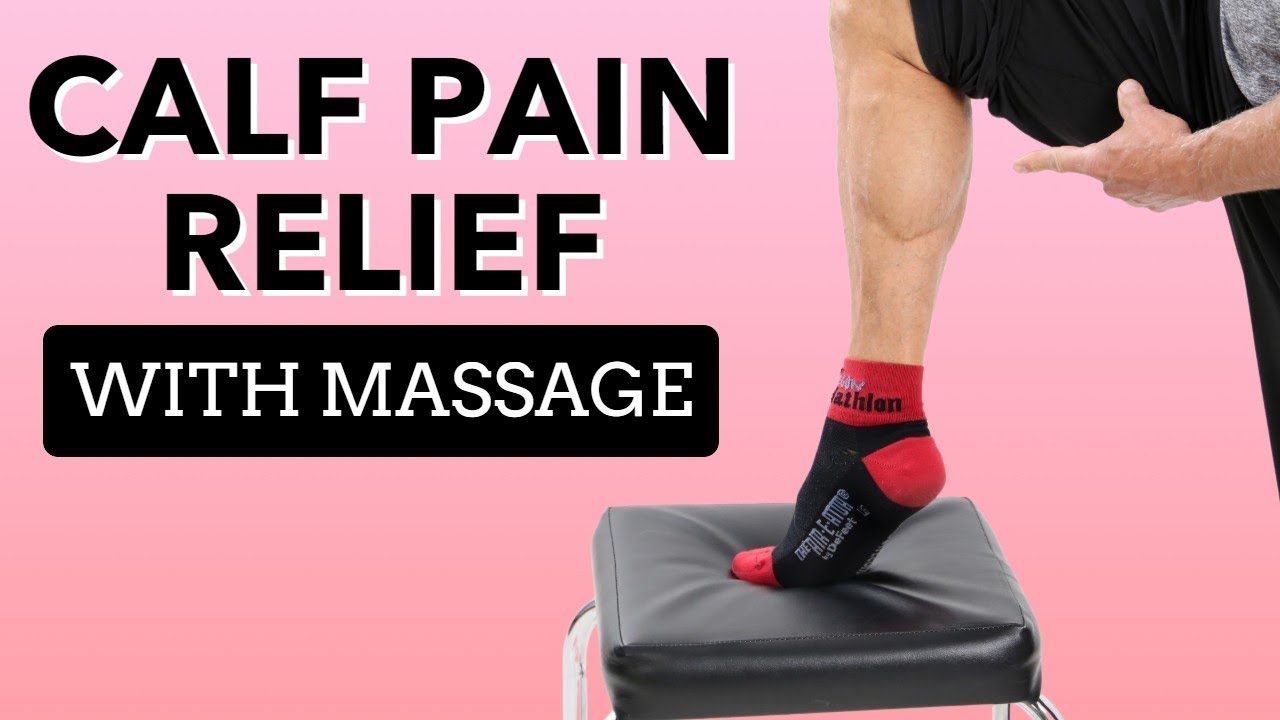Calf pain can throw off your routine, whether it's from a tough workout, a muscle strain, or daily wear and tear. Bob Schrupp and Brad Heineck, trusted physical therapists, share practical steps to relieve discomfort using a massage gun. This guide distills their expert advice into a clear plan to help you ease calf pain safely and effectively.
Why a Massage Gun?
Massage guns use rapid vibrations to boost blood flow, relax muscles, and break up scar tissue, making them great for calf strains or soreness. But first, rule out serious issues like Deep Vein Thrombosis (DVT), which may cause swelling, redness, or pain when squeezing the calf. Conditions like diabetic neuropathy or arterial claudication (pain from narrowed arteries) also need medical attention. Consult a doctor if symptoms seem unusual.
Steps to Relieve Calf Pain
1. Find the Sore Spot
Use your fingers to locate the tender area. Pain might be in the mid-calf (gastrocnemius) or near the Achilles tendon (soleus). Press deeply to find the exact spot, avoiding surface-level discomfort.
2. Pick the Right Head
Start with a soft, air-filled, or cushioned massage gun head to avoid irritation, especially near bones. Graduate to a round head for broader coverage or a bullet head for precision, but steer clear of aggressive heads unless experienced.
3. Massage Strategically
Begin around the sore area, not directly on it, to warm up the muscle. Bob suggests working "outside in." Massage over clothes or on skin—whatever feels better. Move the gun along the calf's vertical fibers (up and down), then try cross-fiber (side to side) to break up scar tissue.
4. Add Movement
Bob and Brad recommend "flossing" by moving your foot up, down, or side to side while massaging. This targets different muscle areas, mimicking daily activity and boosting relief.
5. Keep It Gentle
Use a low setting and massage each area for 1-2 minutes. Stop if it hurts, and adjust the speed or head for comfort.
Extra Tips
A massage gun can work wonders for calf pain when used right. Follow Bob and Brad’s advice—find the pain, use a gentle head, massage smart, and add movement—to ease soreness and recover faster.
- Stretch It Out: Pair massage with calf stretches.
- Be Regular: Consistent massage, rest, and hydration help prevent pain from returning.
When to Stop
If pain worsens or you notice swelling, redness, or warmth, stop and see a doctor. These could signal DVT or other issues needing urgent care.
The Bottom Line
Massage guns can be fantastic tools for the right situations, but they're not appropriate for every body part or condition. By avoiding these 10 danger areas, you can safely enjoy the benefits of percussion therapy without risking injury or complications.
Always start with the lowest setting when trying a massage gun for the first time, and remember that more pressure isn't always better. When in doubt, consult with a physical therapist or healthcare provider about the safest way to use your massage gun for your specific needs.
Recommended Massage Guns for Safe Recovery
The Ultimate Compact Massage Gun with Dual Therapy
The C2 Pro combines percussion therapy with innovative heat and cold treatment options in a compact design. With moderate power and multiple speed settings, this versatile massage gun works effectively for most users.
The Best Mini Massage Gun for On-The-Go
Don't let its mini size fool you—the Q2 Pro delivers decent power and dual heat/cold therapy in an ultra-portable package. Ideal for on-the-go recovery, this lightweight device fits easily in gym bags or purses while maintaining enough strength for effective muscle release. Perfect for travelers and busy professionals.
The Most Powerful Massage Gun for Professional Recovery
The D6 Pro offers exceptional power that rivals professional devices at an accessible price point. With industry-leading stall force and amplitude, it's designed for deep tissue work on dense muscles. Athletes and bodybuilders will appreciate its professional-grade performance for serious recovery needs.
FAQs About Massage Gun Safety
Q: Can I use a massage gun every day? A: For most healthy individuals, daily use on appropriate areas is fine, but it's best to give tissues a chance to recover between sessions.
Q: How long should I use a massage gun in one area? A: Generally, 1-2 minutes per muscle group is sufficient. Longer isn't necessarily better.
Q: Are cheaper massage guns safe to use? A: Quality varies widely. Look for reputable brands with safety features and multiple head attachments for versatility.
Q: Can children use massage guns? A: With supervision and on appropriate settings, older children may benefit, but always consult with a pediatrician first.
Q: Should massage guns hurt during use? A: No. You should feel pressure and perhaps mild discomfort, but never pain. If it hurts, stop immediately.



Share:
How to Use a Massage Gun for Trigger Finger Relief
How to Heal Golfer's Elbow with Self-Massage